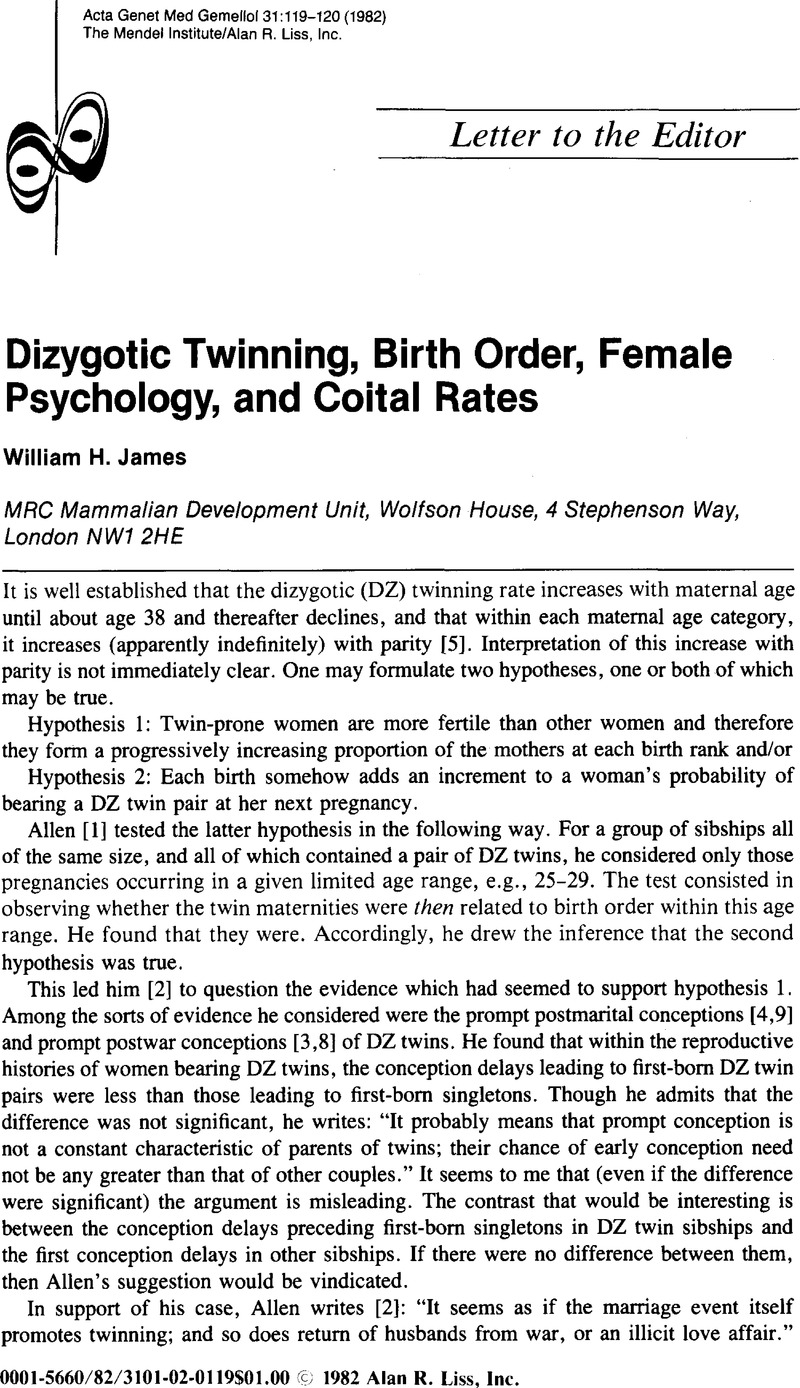Crossref Citations
This article has been cited by the following publications. This list is generated based on data provided by Crossref.
Allen, Gordon
1982.
Reply to W. H. James.
Acta geneticae medicae et gemellologiae: twin research,
Vol. 31,
Issue. 1-2,
p.
121.
Bertranpetit, J.
and
Marin, A.
1988.
Demographic Parameters and Twinning: A Study in Catalonia, Spain.
Acta geneticae medicae et gemellologiae: twin research,
Vol. 37,
Issue. 2,
p.
127.
James, William H.
1990.
Coitus-Induced Ovulation and Its Implications for Estimates of Some Reproductive Parameters.
Acta geneticae medicae et gemellologiae: twin research,
Vol. 33,
Issue. 4,
p.
547.



